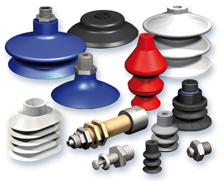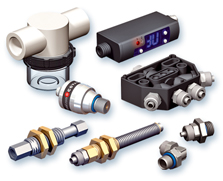The process of defining an installation
1. Defining the appropriate suction pads and fixings for the object to be gripped, the movements required, the type of object (air-tight or porous), the effort required, the cycling rate, the environment, etc.
2. Selecting the appropriate vacuum generator for the suction pads, the type of object (air-tight or porous), the required response times, etc.
3. Identifying the additional components required to connect, supply and control the installation.
The 3 steps to follow:

.jpg)
